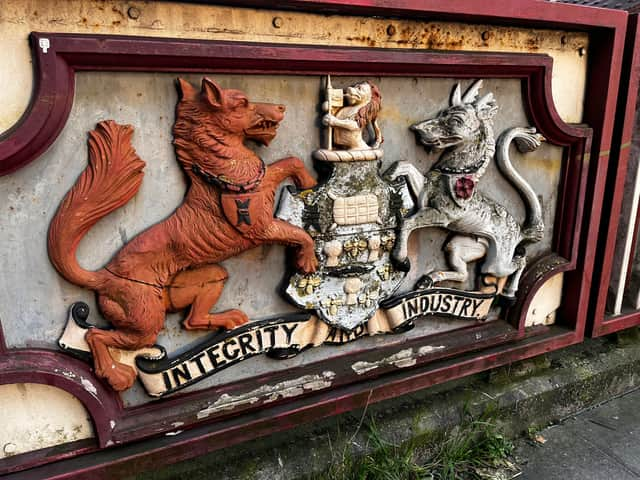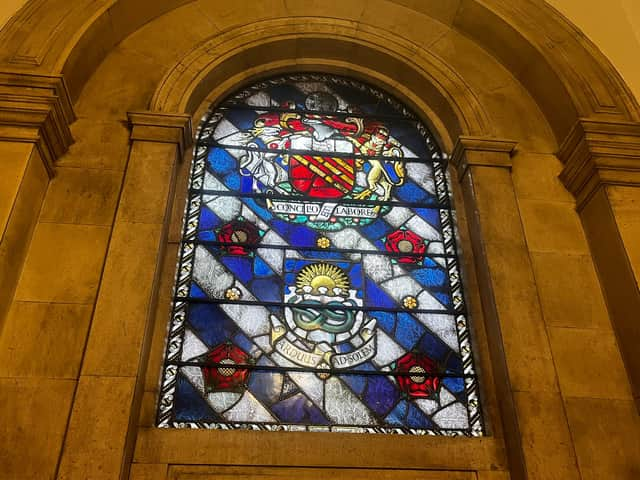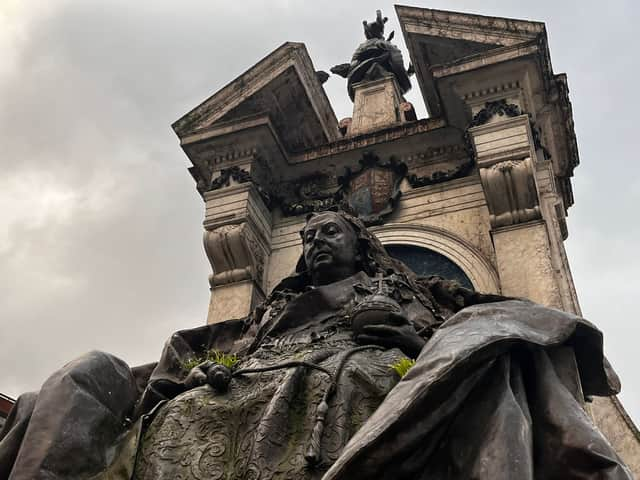Manchester coat of arms: What all the symbols mean including iconic worker bee and city motto
and live on Freeview channel 276
Today the worker bee is the most prominent symbol of Manchester, but that is just one of several elements chosen to represent the city on its official coat of arms.
You can find the bee on everything from street art to bins, tattoo sleeves to the engravings on historic city centre buildings. But if you look a little bit harder, you’ll see that there is more to Manchester’s heraldry than the bee. The coat of arms that we have today was granted to Manchester in 1842 and the symbols reflect the city’s achievements of the time, namely trade and industry. Here is a full rundown of Manchester’s heraldry.
Advertisement
Hide AdAdvertisement
Hide Ad

What do all the symbols mean?
‘Consilio et Labore’ The city’s motto. From the Latin meaning ‘by counsel and effort,’ taken from the bible book Ecclesiasticus.
Globe and bees – The worker bees represent hard work and industriousness. The globe, like the ship, represents Manchester’s influence on the rest of the world in a variety of fields, including trade, science and politics.
Red shield and gold stripes – There are a couple of ways to interpret the stripes on the shield. Historically, the stripes represented the Lords of Manor of Manchester, who lived in the area until the 14th century. More recently, however, these stripes have come to represent the three rivers that run through Greater Manchester – rivers Irwell, Irk and Medlock.


The lion and the antelope – The lion is a common animal to appear on heraldry, and it represents strength and bravery. The antelope refers to a mythical creature, different from the real life animal. It has spiked horns, a mane and long bushy tail. This heraldic antelope signifies peace, harmony and political wisdom. Both the lion and antelope also feature on their shoulders the red rose, a symbol of the Lancastrian king Henry VI.
Advertisement
Hide AdAdvertisement
Hide AdShip – The ship is an obvious reference to Manchester’s achievements in trade. It is also famously used on both Manchester United and Manchester City’s badges. However, in recent years there has been some debate about the ship symbol’s association with slavery.
Cottongrass – This is another reference to Manchester’s trade and industry, particularly the city’s prominence in the cotton and textile industry.


Other Manchester symbols
Another coat of arms you might see while wandering through the city centre is the heraldry for Greater Manchester, which was adopted in 1974 but rarely used today. It also includes a red shield, but instead of three stripes it has ten turrets representing the the ten boroughs of Manchester. It is supported by two lions and includes a French horn, representing music, and an open book, representing academia.
Manchester had a slight rebrand in 2011, thanks to Peter Saville, the graphic designer behind Joy Division’s iconic Unknown Pleasures album art. The result was an ‘M’ with overlapping lines and it can be found on signs around the city.
Advertisement
Hide AdAdvertisement
Hide AdColours are also important to Manchester and Mancunians. Blue and red respectively represent the city’s two major football clubs. You will also see a lot of purple in Manchester, symbolic of the Suffragette movement which was born here. The yellow and black stripes of the bee are also the main colours associated with the Hacienda nightclub and Factory Records.
Comment Guidelines
National World encourages reader discussion on our stories. User feedback, insights and back-and-forth exchanges add a rich layer of context to reporting. Please review our Community Guidelines before commenting.
